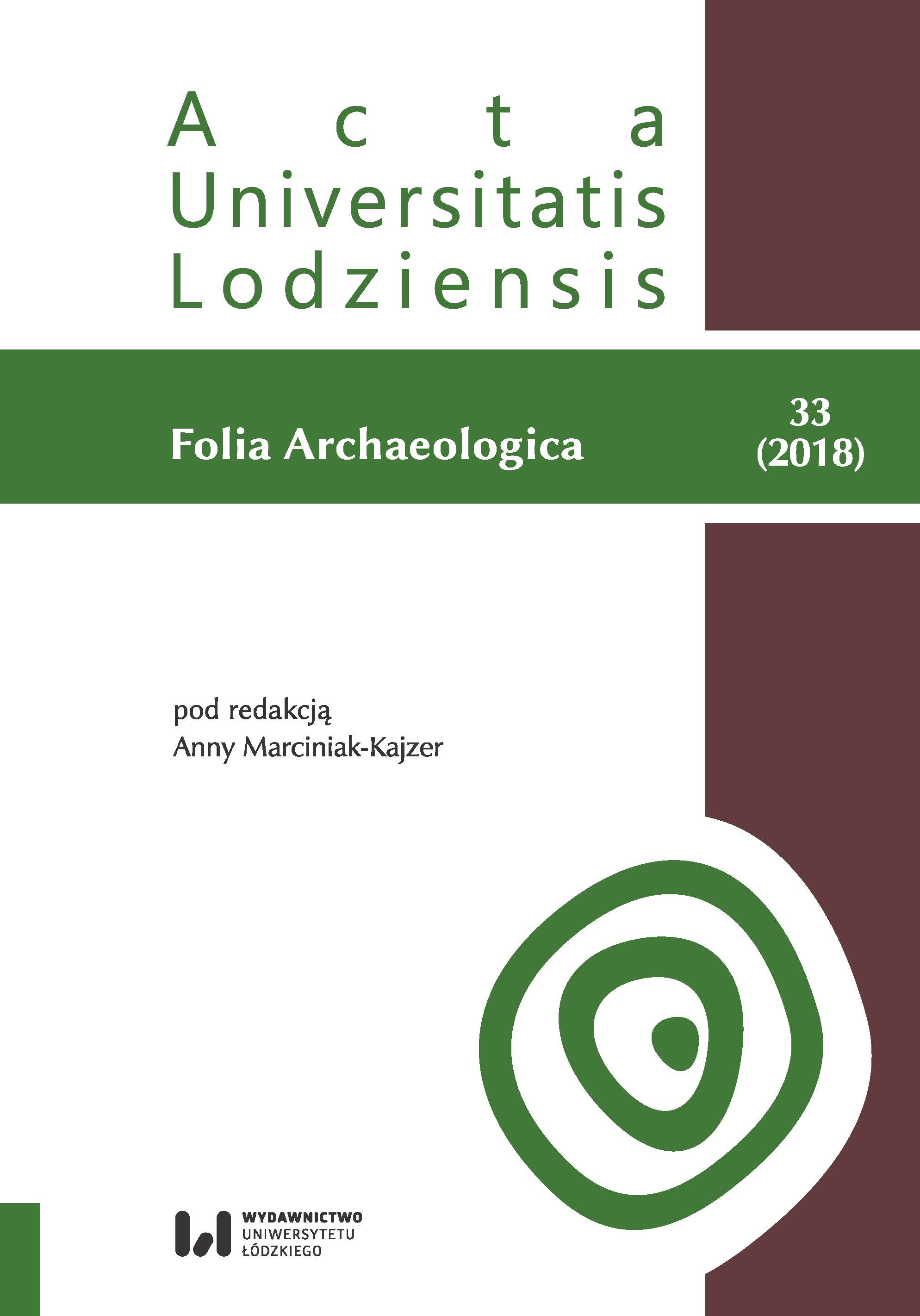Późnośredniowieczna ceramika naczyniowa z gródka stożkowatego w Giecznie, gm. Zgierz, pow. zgierski, woj. łódzkie
Late medieval pottery from motte in Gieczno, commune and county Zgierz, Łódź voivodship
Author(s): Anna Nierychlewska, Jerzy SikoraSubject(s): Archaeology, Middle Ages
Published by: Wydawnictwo Uniwersytetu Łódzkiego
Keywords: pottery; motte; Late Middle Ages; central Poland
Summary/Abstract: A Late medieval motte-and-bailey timber castle in Gieczno was recognized by an analysis of the LiDAR derived Digital Terrain Model in 2014. The stronghold’s remnants are situated in the Moszczenica River valley, on a small hillock – most probably the residual terrace. It is preserved as a small mound, elevated no more then 1,5 m above the surrounding floodplain in the bottom of the valley. The mound has dimensions of 31 x 33 m and an area of about 890 m2. It is surrounded by a moat, about 8 to 10 m wide, and an adjacent low rampart not exceeding the height of 0.5 in relation to the bottom of the moat. The course of the rampart is interrupted in the south-eastern part. Another small, oval hillock with dimensions of approximately 23.4 x 37.9 m is noticeable there. This find should be interpreted as remains of a motte and bailey castle with an economic area which supplemented the mound. In 2015, a field investigation was run by Jerzy Sikora from the Institute of Archaeology of University of Łódź. During two weeks of field work, two trenches were explored: Trench 1 (with dimensions of 1,5 x 35 m) cut the mound from its center to the South through the moat and the outer rampart in order to obtain a cross section of the feature. Trench 2 (with dimensions of 12 x 1,5 m) was situated on the hillock (supposedly – motte) with the aim to recognize its stratigraphy. During the excavation, a collection of Late Medieval potsherds was obtain (1472 pieces) together with a small number of metal finds, bones, slag pieces and a carved wooden artefact – a part of the Late Medieval furniture piece. An analysis of the collection helped to establish its chronology to the 14th and first half of 15th centuries. The collection was distinguished by a significant number of potsherds made with the use of traditional methods and a relatively low amount of potsherds fired in a reducing (oxidizing) atmosphere. This indicates ties with the local, rural workshops rather than with the advanced manufacturing known in towns. The excavations of the Gieczno stronghold revealed two phases of the feature: – Phase I – the timber ringwork, protected with a small inner rampart, a palisade, a moat and an outer rampart can be dated by the radiocarbon analysis supported by an analysis of the finds to the 1st quarter of the14th century. – Phase II – characterized by the development of the earthen mound as a basis of a vertical manor house (tower) should be dated to the end of 1st quarter of the 15th century (dendrochronological dating of one of timber beams to 1422 AD). In our opinion, both phases of the fortified manor are associated with a noble family of the Toporczycy.
Journal: Acta Universitatis Lodziensis. Folia Archaeologica
- Issue Year: 2018
- Issue No: 33
- Page Range: 113-152
- Page Count: 40
- Language: Polish

